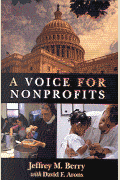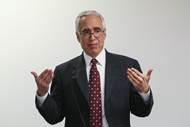In the wake of corporate scandals, the federal government needs a new role model. Operating like a business used to be something the federal government aspired to. It once meant being lean, efficient and customer-focused. It now means being devious, manipulative and dishonest. If government can’t be more like business, what can it be? The surprising answer is that government should become more like a nonprofit organization. Although business may be more efficient than government, the nonprofit sector has a much more motivated work force. Its employees have a greater sense of mission, a greater desire to make a difference and a love of their work stronger than any other work force in America.
The evidence comes from a recent Brookings Institution survey of 1,140 nonprofit employees published by Third Sector New England, a resource organization for the nonprofit sector. The survey is almost identical to two previous Center for Public Service surveys of federal and business employees. According to these surveys, more nonprofit employees come to work each morning because they love their jobs and want to help people. Fewer come to work for the paycheck, security or benefits.
Unfortunately, nonprofit employees love their work so much that they set themselves up for exploitation. The pay and benefits are so meager that many employees can’t afford to stay for long.
Nevertheless, the nonprofit sector provides the kind of work that many talented Americans want. Those who care about making government more competitive in the talent wars should look at how nonprofits compete for civic-minded talent.
Unfortunately, there is one area where the federal government outdoes the nonprofit sector. More than 80 percent of federal employees surveyed said their organizations only sometimes or rarely provide needed training, compared with about 30 percent of nonprofit employees. And almost 60 percent of federal employees reported that their organizations only sometimes or rarely provided enough employees to do their jobs well, compared with just over 40 percent of nonprofit workers.
The federal government would do well to stop gazing longingly at business as the paragon of performance and start thinking about what gives the nonprofit sector such a big heart. The answers could provide a blueprint for the kind of reforms that would make the federal government work. Paul C. Light is director of the Center for Public Service at the Brookings Institution in Washington.







Commentary
Op-edLessons of Nonprofits
November 29, 2002